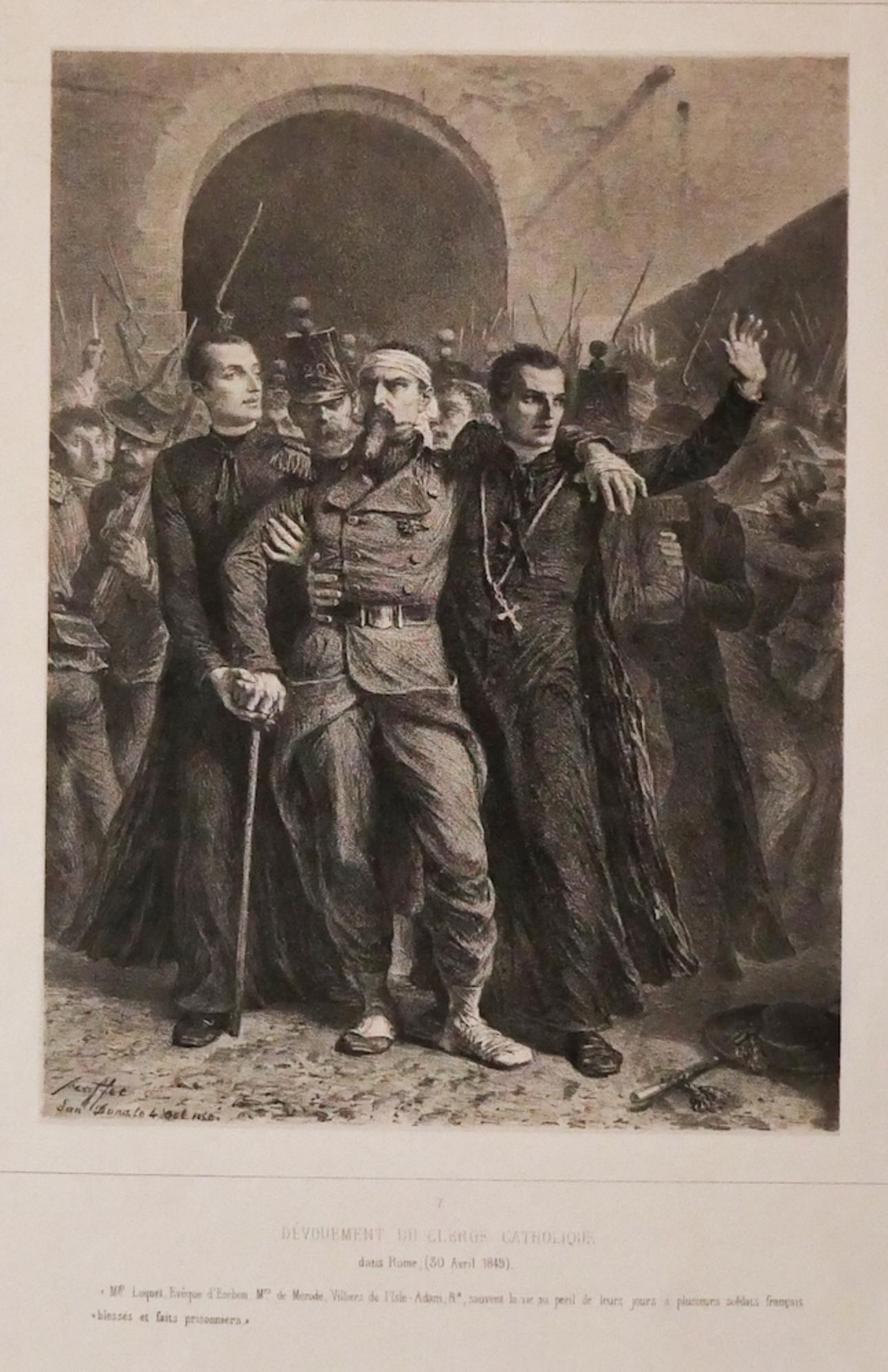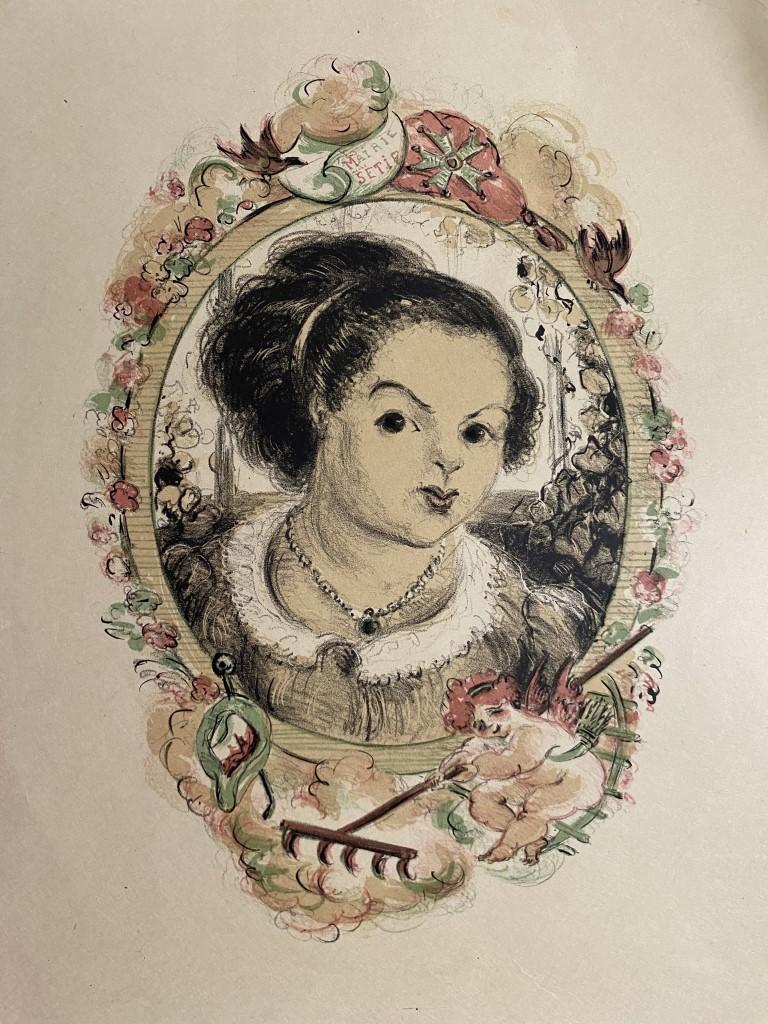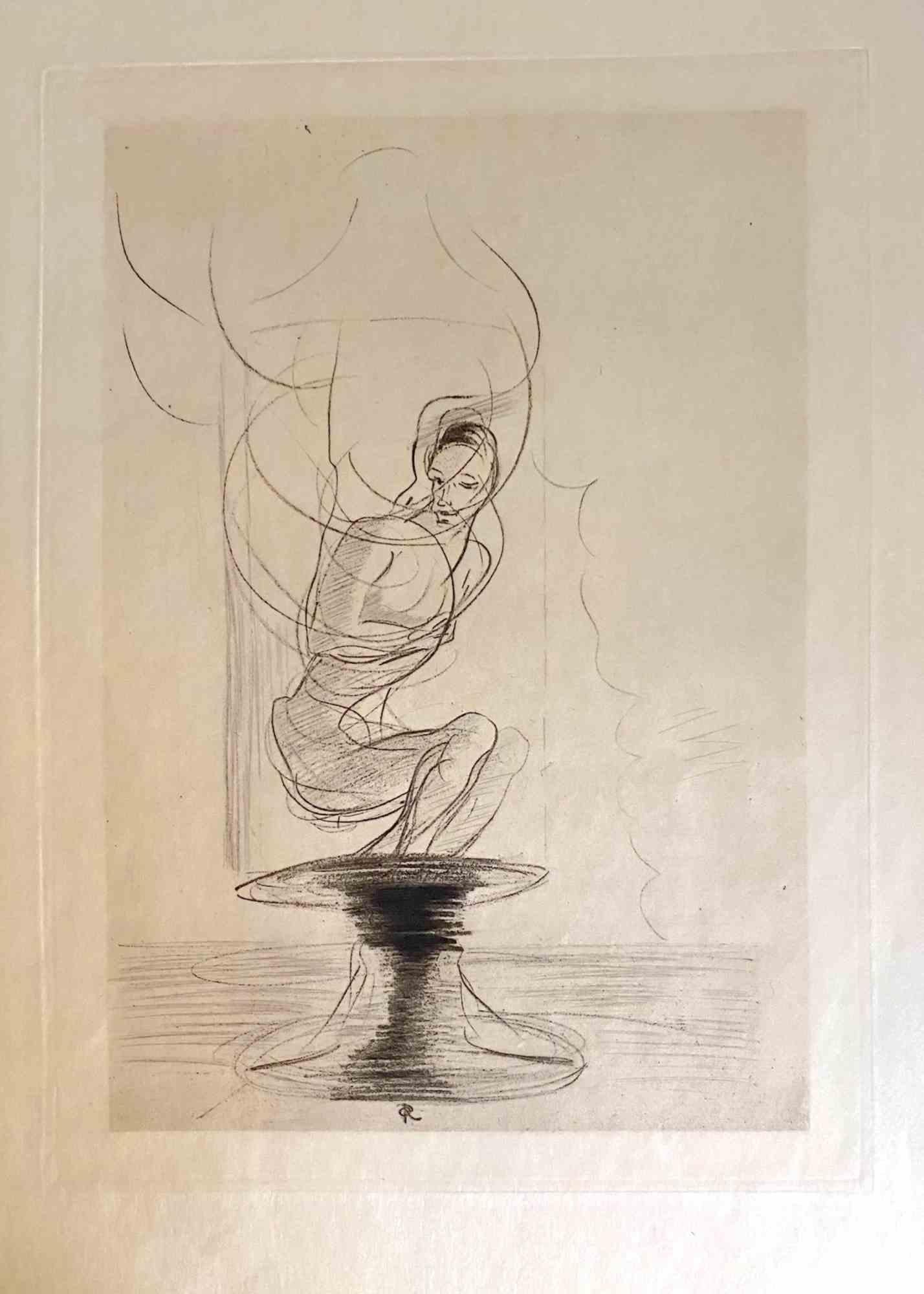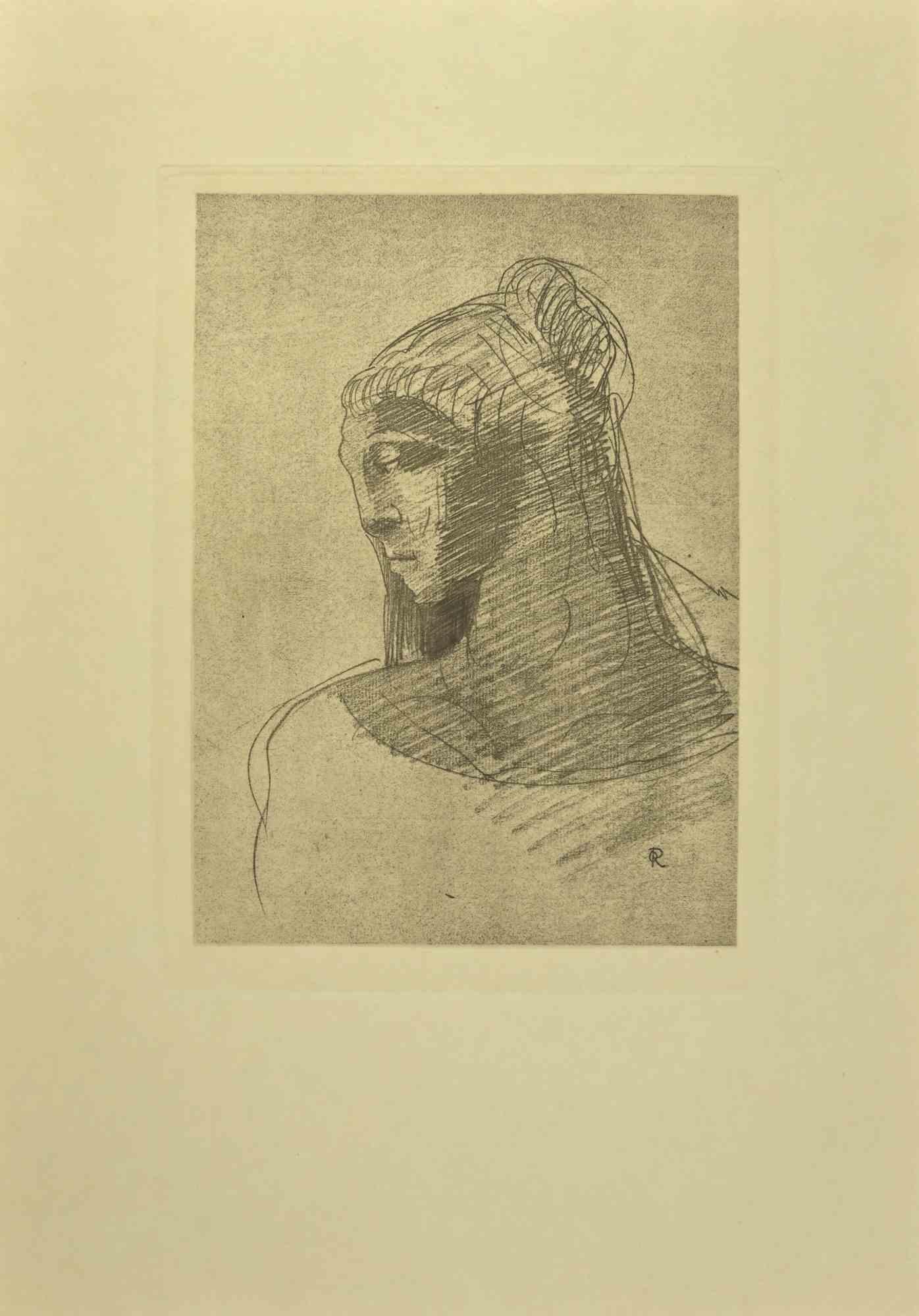Items Similar to Qua-Ta-Wa-Pea or Col. Lewis. A Shawnee Chief.
Want more images or videos?
Request additional images or videos from the seller
1 of 6
McKenney & HallQua-Ta-Wa-Pea or Col. Lewis. A Shawnee Chief.1836
1836
About the Item
MCKENNEY, Thomas L. (1785-1859) and James HALL (1793-1868)
Qua-Ta-Wa-Pea or Col. Lewis. A Shawnnee Chief.
Philadelphia: E.C. Biddle, 1836. Hand-coloured lithograph. Image size (including text): 14 3/8 x 10 inches. Sheet size: 20 x 14 1/8 inches. Framed size: 24 x 20 3/8
A fine image from McKenney and Hall's 'Indian Tribes of North America': `One of the most important [works] ever published on the American Indians' (Field),` a landmark in American culture' (Horan) and an invaluable contemporary record of a vanished way of life.
A courageous Shawnee chief, Qua-Ta-Wa-Pea, also known as Colonel Lewis, was rumored to have been elected leader because the Shawnee interpreted President Jefferson's act of honoring him with a medal during a post-Revolution visit to Washington as a sign that that was the will of the United States. As was frequently the custom among Indians, Qua-Ta-Wa-Pea adopted the name of a respected white friend, that of Officer John Lewis. The Shawnee, an Algonquin speaking tribe, inhabited the Southeastern region of the United States.
McKenney and Hall's 'Indian Tribes of North America' has long been renowned for its faithful portraits of Native Americans. The portraits are largely based on paintings by the artist Charles Bird King, who was employed by the War Department to paint the Indian delegates visiting Washington D.C., forming the basis of the War Department's Indian Gallery. Most of King's original paintings were subsequently destroyed in a fire at the Smithsonian, and their appearance in McKenney and Hall's magnificent work is thus our only record of the likenesses of many of the most prominent Indian leaders of the nineteenth century. Numbered among King's sitters were Sequoyah, Red Jacket, Major Ridge, Keokuk, and Black Hawk. After six years as Superintendent of Indian Trade, Thomas McKenney had become concerned for the survival of the Western tribes. He had observed unscrupulous individuals taking advantage of the Native Americans for profit, and his vocal warnings about their future prompted his appointment by President Monroe to the Office of Indian Affairs. As first director, McKenney was to improve the administration of Indian programs in various government offices. His first trip was during the summer of 1826 to the Lake Superior area for a treaty with the Chippewa, opening mineral rights on their land. In 1827, he journeyed west again for a treaty with the Chippewa, Menominee , and Winebago in the present state of Michigan. His journeys provided an unparalleled opportunity to become acquainted with Native American tribes. When President Jackson dismissed him from his government post in 1830, McKenney was able to turn more of his attention to his publishing project. Within a few years, he was joined by James Hall, a lawyer who had written extensively about the west. McKenney and Hall saw their work as a way of preserving an accurate visual record of a rapidly disappearing culture. (Gilreath).
Cf. BAL 6934; cf. Bennett p.79; cf. Field 992; cf. Howes M129; cf. Lipperhiede Mc4; cf. Reese, Stamped With A National Character p. 24; Sabin 43410a.
- Creator:
- Creation Year:1836
- Dimensions:Height: 24 in (60.96 cm)Width: 20.38 in (51.77 cm)
- Medium:
- Period:
- Condition:Good overall condition with some foxing.
- Gallery Location:Missouri, MO
- Reference Number:1stDibs: LU74732426093
McKenney & Hall
Col. Thomas J. McKenney was Superintendant of The Bureau of Indian Affairs from 1816 until 1830. He was one of a very few government officials to defend American Indian interests and attempt to preserve their culture. He travelled to Indian lands meeting the Native American leaders. He brought with him an accomplished artist, James Otto Lewis, who sketched those willing to participate. A large number of the most influential Indian chiefs and warriors were later invited to come to Washington in 1821 to meet President Monroe. McKenney commissioned the prominent portrait painter Charles Bird King, who had a studio in the capital, to paint these native American leaders, who chose the costumes they wished to wear for the sitting. The magnificent resultant paintings were displayed in the War Department until 1858, and were then moved to the Smithsonian Institute. When Andrew Jackson dismissed McKenney in 1830, he gave him permission to have the King portraits as well as some by other artists, including George Catlin and James Otto Lewis, copied and made into lithographs, in both folio and octavo sizes. McKenney partnered with James C. Hall, a Cincinnati judge and novelist to publish the lithographs and the text written by Hall. The work was extremely expensive to create and nearly bankrupted McKenney, as well as the two printing firms who invested in its publication. The resultant work gained importance when Catlin's paintings were destroyed in a warehouse fire and Charles Bird King's and James Otto Lewis’ portraits were destroyed in the great Smithsonian Museum fire of 1865. The McKenney and Hall portraits remain the most complete and colorful record of these pre-Civil War Native American leaders.
About the Seller
5.0
Vetted Seller
These experienced sellers undergo a comprehensive evaluation by our team of in-house experts.
Established in 1970
1stDibs seller since 2017
142 sales on 1stDibs
Typical response time: 20 hours
- ShippingRetrieving quote...Ships From: Missouri, MO
- Return PolicyA return for this item may be initiated within 2 days of delivery.
More From This SellerView All
- The Hymn SingerBy Thomas Hart BentonLocated in Missouri, MOSigned in Pencil Lower Right Ed. 500 Circulated by Twayne Publishers, New York City Image Size: 16 x 12 3/8 Framed Size: 24 1/4 x 20 1/2 inches The legendary actor actor and musici...Category
1950s American Realist Portrait Prints
MaterialsLithograph
- Tshusick, An Ojibway WomanBy McKenney & HallLocated in Missouri, MOLithograph with original hand color. Sheet size: 18.5 x 13.25 inches. Framed Size: 24 x 20 3/8 inches Date : c. 1836-44 Mckenney and Hall's hand colored lithographs remain some of...Category
1830s American Realist Portrait Prints
MaterialsLithograph
- RembrandtBy Salvador DalíLocated in Missouri, MORembrandt Salvador Dali (Spanish, 1904-1989) Signed Lower Right "E.A." (Artist Edition) Lower Left 12 x 10 inches 23.25 x 19.25 inches with frame Salvador Dali was born in May 11, 1...Category
20th Century Modern Portrait Prints
MaterialsEtching
- "Mlle Landsberg" (grade planche, pl. 16)By Henri MatisseLocated in Missouri, MO"Mlle Landsberg" (grade planche, pl. 16), 1914 Henri Matisse (French, 1869-1954) Signed and Numbered Lower Right Edition 12/15 Image size: 7 7/8 x 4 5/16 inches Sheet size: 17 11/16 x 12 1/2 inches With frame: 19 1/2 x 14 1/2 inches Henri Matisse came from a family who were of Flemish origin and lived near the Belgian border. At eight o'clock on the evening of December 31, 1869, he was born in his grandparents' home in the town of Le Cateau in the cheerless far north of France. His father was a self-made seed merchant who was a mixture of determination and tightly coiled tension. Henri had no clear idea of what he wanted to do with his life. He was a twenty-year-old law clerk convalescing from appendicitis when he first began to paint, using a box of colors given to him by his mother. Little more than a year later, in 1890, he had abandoned law and was studying art in Paris. The classes consisted of drawing from plaster casts and nude models and of copying paintings in the Louvre. He soon rebelled against the school's conservative atmosphere; he replaced the dark tones of his earliest works with brighter colors that reflected his awareness of Impressionism. Matisse was also a violinist; he took an odd pride in the notion that if his painting eye failed, he could support his family by fiddling on the streets of Paris. Henri found a girlfriend while studying art, and he fathered a daughter, Marguerite, by her in 1894. In 1898 he married another woman, Amelie Parayre. She adopted the beloved Marguerite; they eventually had two sons, Jean, a sculptor and Pierre who became an eminent art dealer. Relations between Matisse and his wife were often strained. He often dallied with other women, and they finally separated in 1939 over a model who had been hired as a companion for Mme. Matisse. She was Madame Lydia, and after Mme. Matisse left, she remained with Matisse until he died. Matisse spent the summer of 1905 working with Andre Derain in the small Mediterranean seaport of Collioure. They began using bright and dissonant colors. When they and their colleagues exhibited together, they caused a sensation. The critics and the public considered their paintings to be so crude and so roughly crafted that the group became known as Les Fauves (the wild beasts). By 1907, Matisse moved on from the concerns of Fauvism and turned his attention to studies of the human figure. He had begun to sculpt a few years earlier. In 1910, when he saw an exhibition of Islamic art, he was fascinated with the multiple patterned areas and adapted the decorative universe of the miniatures to his interiors. As a continuation of his interest in the "exotic", Matisse made extended trips to Morocco in 1912 and 1913. At the end of 1917, Matisse moved to Nice; he would spend part of each year there for the remainder of his life. A meticulous dandy, he wore a light tweed jacket amd a tie when he painted. He never used a palette, but instead squeezed his colors on to plain white kitchen dishes...Category
1910s Fauvist Figurative Prints
MaterialsEtching, Drypoint
- Moa-Na-Hon-Ga, Great Walker, An Ioway ChiefBy McKenney & HallLocated in Missouri, MOMOA-NA-HON-GA. GREAT WALKER. AN IOWAY CHIEF., from History of the Indian Tribes of North America Artist:Charles Bird King Publisher:McKenney and Hall hand-colored engraving on paper ...Category
1830s American Realist Portrait Prints
MaterialsEngraving
- Bird's Eye ViewBy Ronnie CutroneLocated in Missouri, MORonnie Cutrone (1948-2013) "Bird's Eye View" c. 1980s Color Lithograph Ed. 222/250 Signed, Numbered and Titled Image Size: 17 x 23.5 inches Framed Size: approx. 24 x 30 inches. Ronnie Cutrone, a figurehead of the Pop and Post-Pop art scenes, was Andy Warhol's assistant at the Factory atop the Decker Building from 1972-1980, and worked closely with Roy Lichtenstein, combining stylistic elements of both. Cutrone's large-scale paintings of American cartoon icons, like Mickey Mouse, Felix the Cat, and Woody Woodpecker further reinvented kitsch and popular media in terms of fine art. Executed in fluorescent monochromatic colors with the finesse of mass-produced silkscreen and prints, Cutrone's works are the reverse of tromp-l'oeil; they use fine art media (watercolor, pastel, crayon - on high-quality paper) to celebrate, rather than hide, the artifice of their subjects. "Everything is cartoon for me", Cutrone is noted for saying, even "ancient manuscripts...Category
Late 20th Century Pop Art Figurative Prints
MaterialsLithograph
You May Also Like
- Double Marilyn - 20th Century - Alejo Vidal Quadras - Portrait - ContemporaryLocated in Roma, ITDouble Marilyn is a black and white lithograph realized by Alejo Vidal-Quadras in the 1960s. Hand-signed by the artist in pencil on the lower centre. Numbered in pencil on the lower ...Category
1960s Contemporary Figurative Prints
MaterialsLithograph
- Young Woman - Original Lithograph by Sandro Trotti - 1980sBy Sandro TrottiLocated in Roma, ITYoung Woman is an original litograph, realized by Sandro Trotti in 1980s. Representing a young woman exalted by a wonderful contrast of colors, this original print is hand-signed in...Category
1980s Contemporary Figurative Prints
MaterialsLithograph
- Devotion - Original Lithography by Denis Auguste Marie Raffet - 1849By Denis Auguste Marie RaffetLocated in Roma, ITDevotion is original lithograph realized by Denis Auguste Marie Raffet in 1849. Signed on the plate on the lower left. Titled on the lower. Good condition. An interesting Lithogra...Category
1840s Portrait Prints
MaterialsLithograph
- Woman Portrait - Original Lithograph - 20th CenturyLocated in Roma, ITWoman Portrait is a splendid lithograph realized by Jacques Marie Gaston Onfroy de Bréville, known by the pen name Job after his initials (1858 - 1931). ...Category
20th Century Figurative Prints
MaterialsLithograph
- Illustration from the Series "Les Fleurs du Mal" after Odilon Redon - 1923By Odilon RedonLocated in Roma, ITIllustration from the series "Les Fleurs du Mal" is an etching print realized after Odilon Redon and published by Henri Felury in 1923. Monogrammed on the plate. Good conditions. ...Category
1920s Symbolist Figurative Prints
MaterialsLithograph
- Illustration from the Series "Les Fleurs du Mal" after Odilon Redon - 1923By Odilon RedonLocated in Roma, ITIllustration from the series "Les Fleurs du Mal" is an etching print realized after Odilon Redon and published by Henri Felury in 1923. Monogrammed on the plate. Good conditions. ...Category
1920s Symbolist Figurative Prints
MaterialsLithograph
Recently Viewed
View AllMore Ways To Browse
Halls Superior
Fielding Lewis
American Indian Chief
Native American Chief
Indian Chief Painting
American Painting 1830
Antique Indian Chief
Paintings Of Indian Chiefs
Bird Jacket
Thomas Jefferson
Antique Indian Stamps
Indian Chief Sign
James L Thomas
Jefferson West
Antique Hawk Painting
Lake Superior
Thomas Jefferson Painting
Native American Jacket






